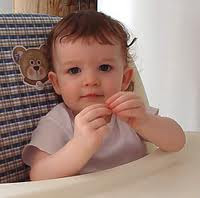
We usually see little boys playing with cars or fighting and little girl having pretend tea time with their dollies. I am taking care of both girls and boys and I can definately say that they are different and this difference is noticeable quite early in infancy.

One day, as I was taking care of Simon (4 years old) and Mary (3 years old) (not their real name) I was wondering : “But why does Simon always ask me to play “Racing cars” with him and Mary wants me to help her cook to feed her dolly?” …. Why is there such a difference in the games that they play already? Is it coming from the way we talk to them, the toys and clothes we buy them or their socialisation with other kids? Or is it already programmed in their gene to fulfil a future role as an
adult ?
Of course, I did some research, I was too curious, and as a result I discovered that many things were responsible for the differences in children’s games and behaviour.
To start, what are their differences? I found that this board represents it very well (see references at the end of this post). These are just examples and of course your child is not stuck into one gender, but every kid has their own set of characteristics and preferences!! But we have to admit that they tend to fit respectively in these 2 columns.
So, usually, girls will tend to show more interest in people and faces and this is evident right from birth. This explain why Little girls are more attracted to play with dollies than with cars or trucks. Little girls will begin to talk earlier than little boys and their games will be more in fantasy than in action. Finally, they will prefer little groups if not one by one game with another child, compare to a boy who will love to have the big crowd of his friends around to play a “pirate game” or “the hunter”. We have to admit that little boys tend to have better mechanical and spatial skills so they will enjoy to play with blocks and build.
So where does this differences come from? I was quite certain that education and socialisation were playing a huge part in this process. But, after reading a few reports, I quickly understand than it wasn’t just this!
Firstly, wile you are pregnant, your baby receives hormones during your pregnancy. Your child also has it's own set of different hormones relating to their gender. This plays a big role in their difference as hormones will influence their behaviour and the way they will interact within the world around them.
Secondly, on a more physical plane, we notice that girls and boys are not equal. Right form the start, boys will have a bigger muscle mass and they are usually more active than little girls. Their brains are a different size as boys will have larger brains (from birth to old age) but little girl’s brains develop earlier than boys. Unfortunately, researchers can’t explain how these differences in the brain structure or growth relate to a difference in behaviour.
So there we go, there are plenty of physical and mental differences between boys and girls. I believed that socialisation was playing a big part in these differences and as a carer I always thought that unconsciously, I probably change the way I act or talk depending of if it was a boy or a girl. I thought that I probably used a softer voice when I was talking to a girl and maybe encourage cars races when I was taking care of a boy. After reading the following experiment, I was not so sure anymore of my role in this stereotype.
You might be wondering if there is something you can do to open your baby’s horizon or do you even need to. There is nothing bad if you buy your little girl pink clothes or dollies instead of cars and trucks, but you can also open the door for your baby to play with different things and let them decide where their preferences lie.
-What about giving your little boy a teddy? He could practice how to nurture and cuddle.
-Filling the toy box with no gender or opposite gender toys
-Taking your daughter to the park and do some physical exercise. Little girls tend to be less active or brave.
Remember, your baby is not stuck in one gender and is probably showing interest in sex opposite toys. But now that I knew that these differences are mostly due to hormones and genetics, it makes me wonder, do we need to have 2 different teaching methods for boys and girls….?
What do you think? Don’t hesitate to tell us what you think on that subject! Thank you for reading this post!
References :

























